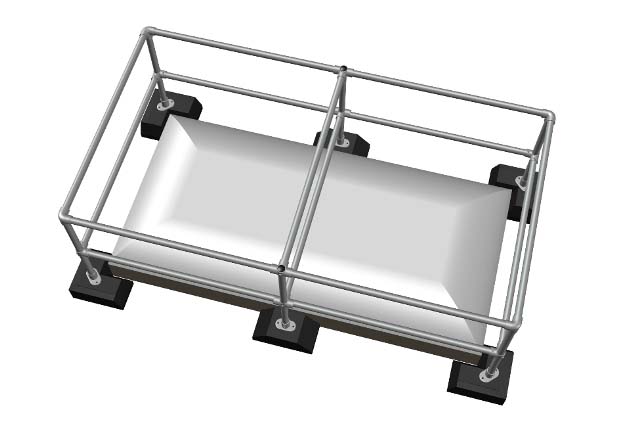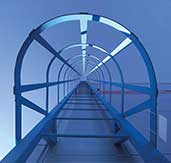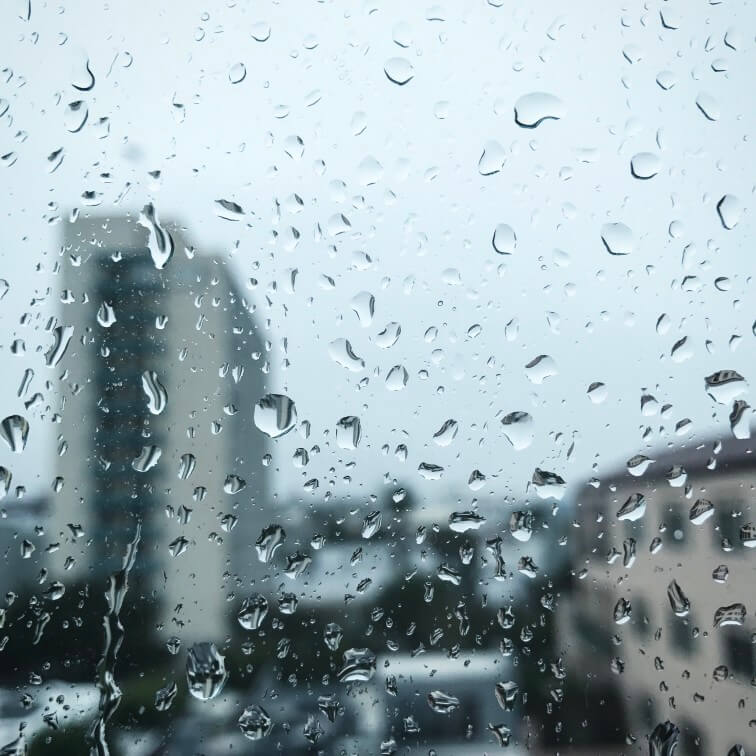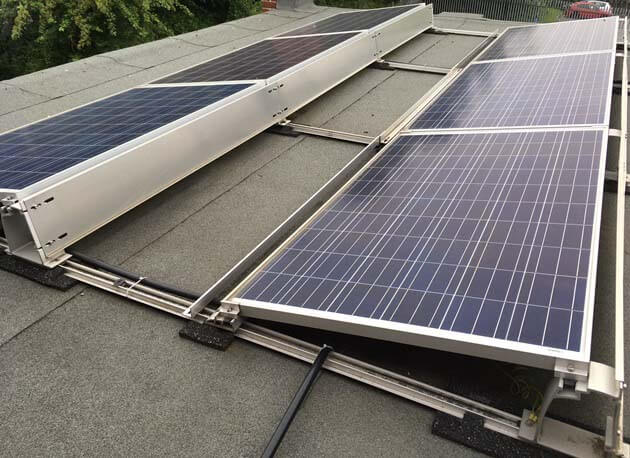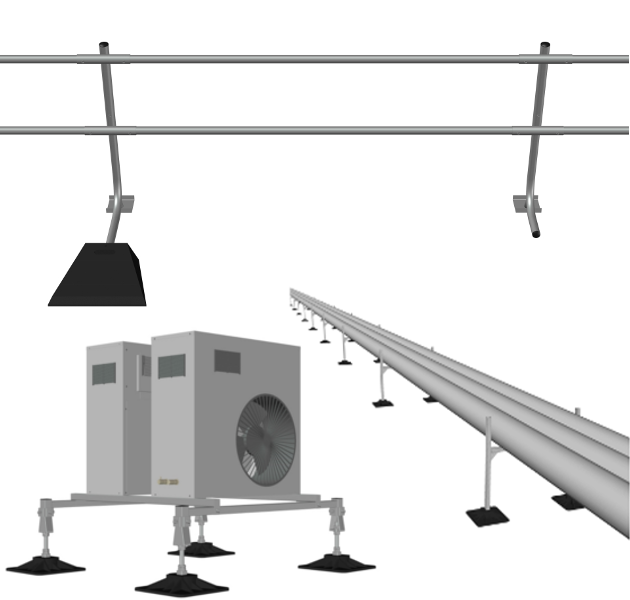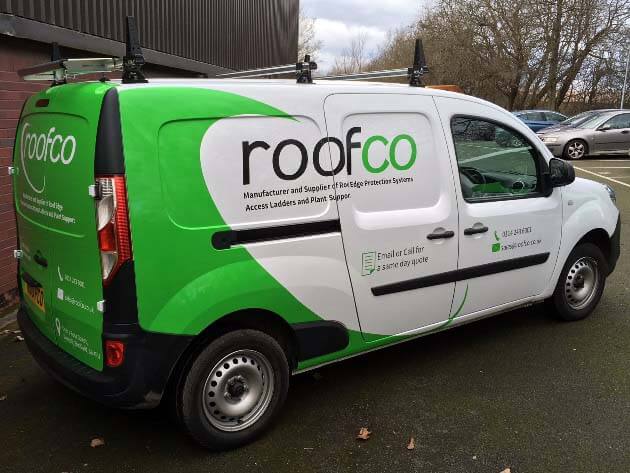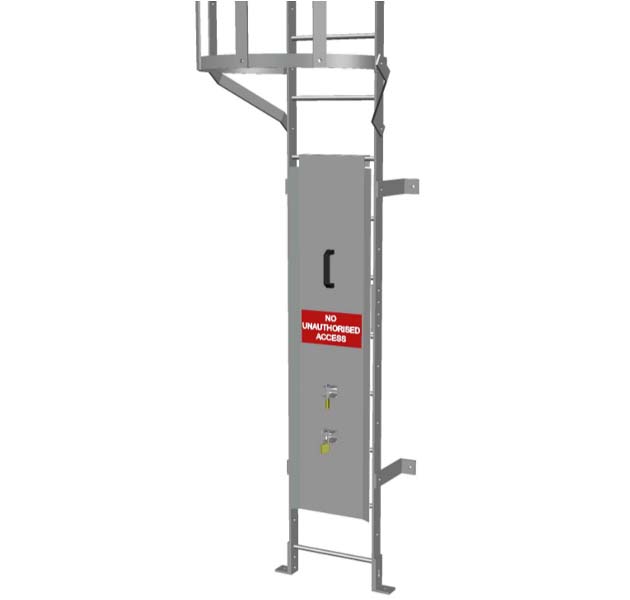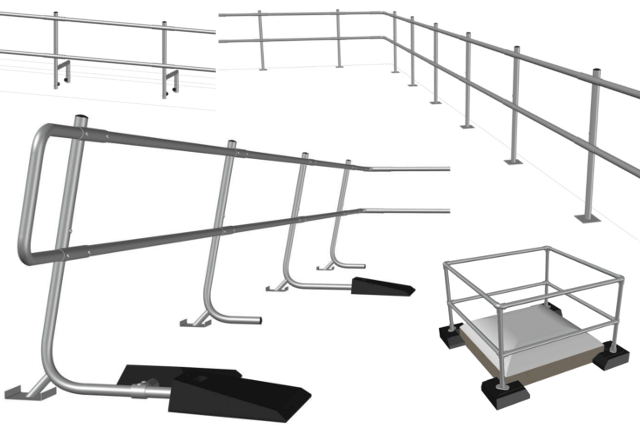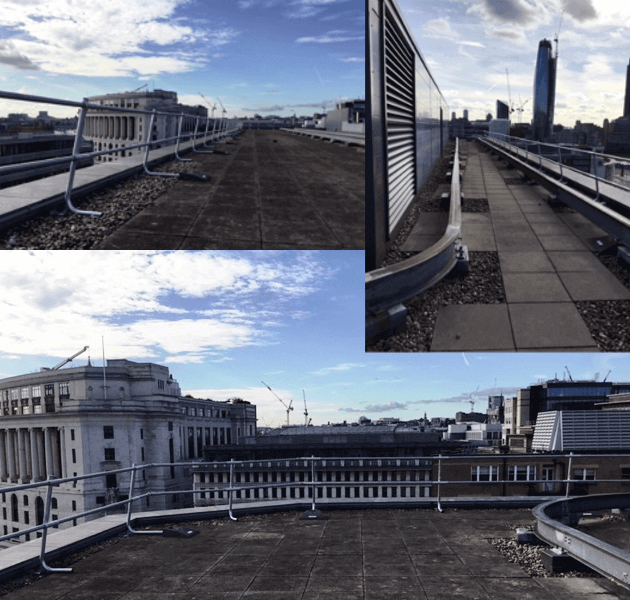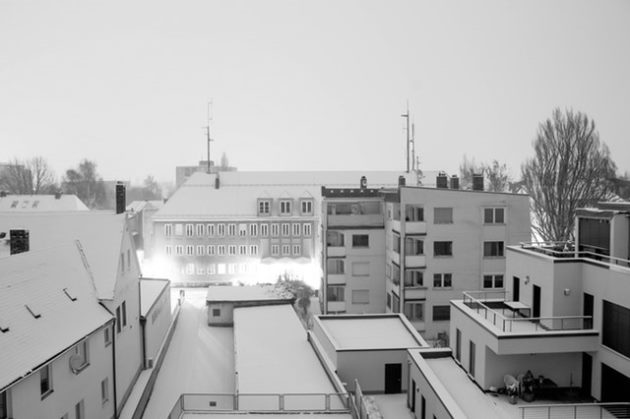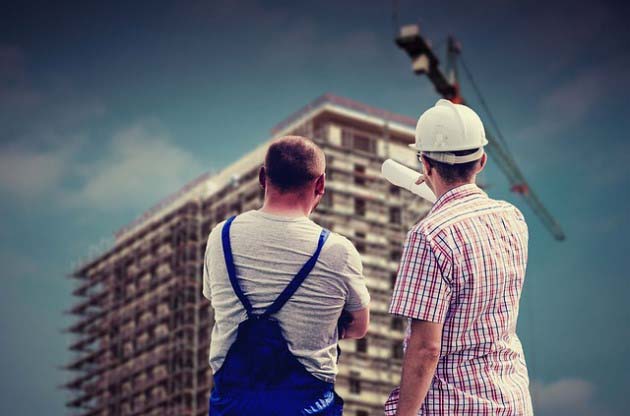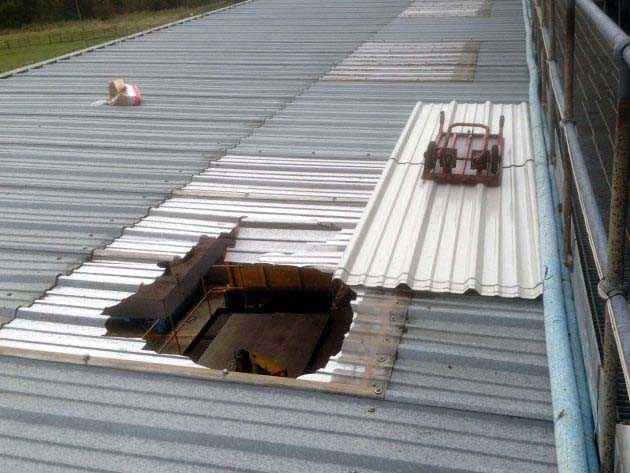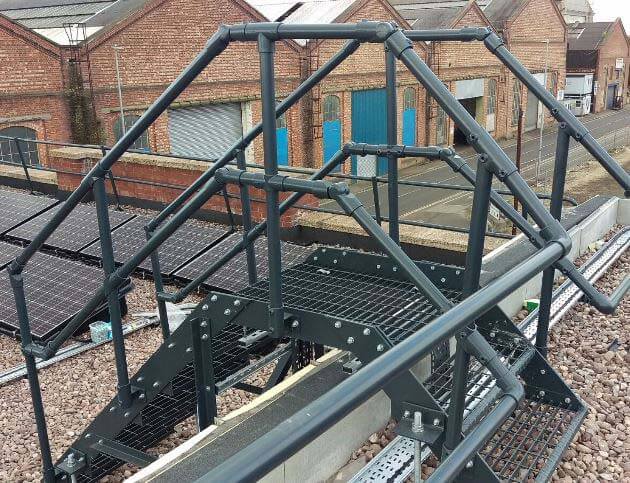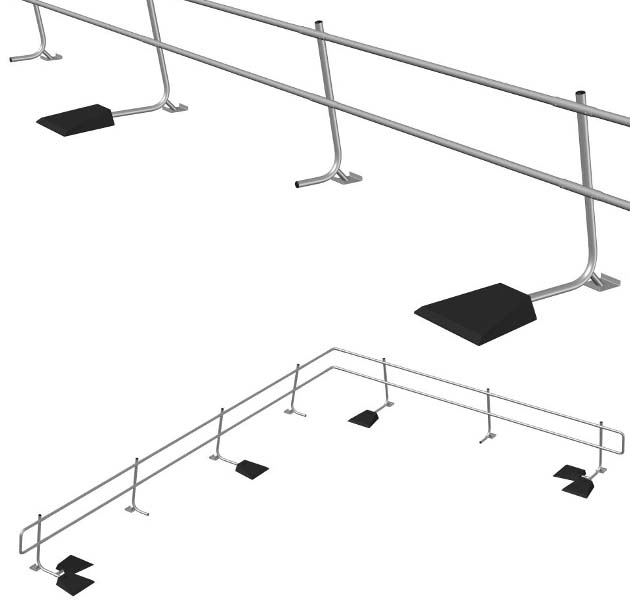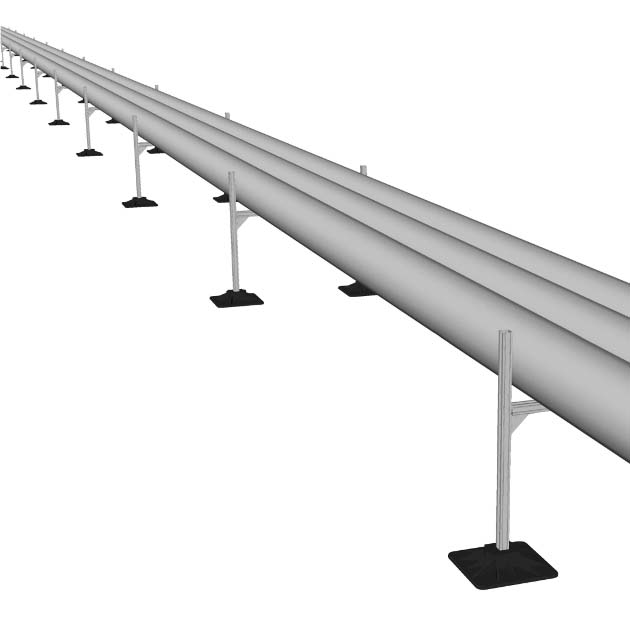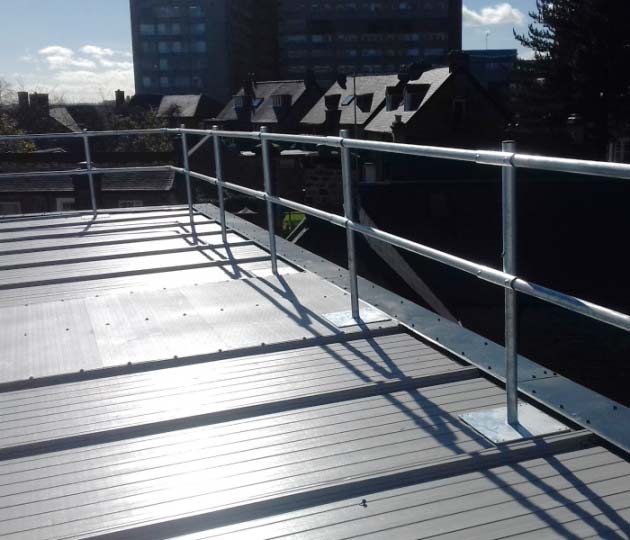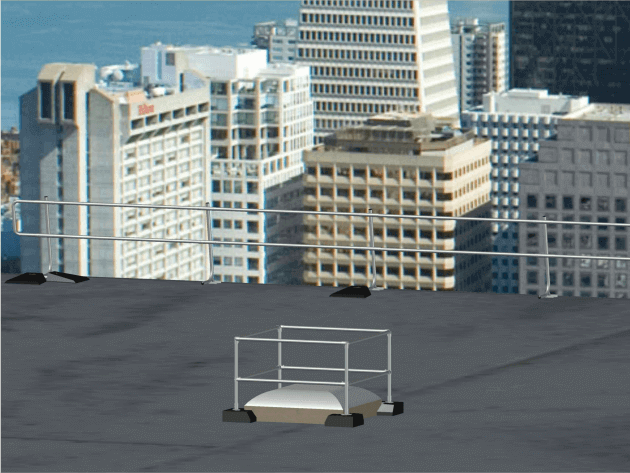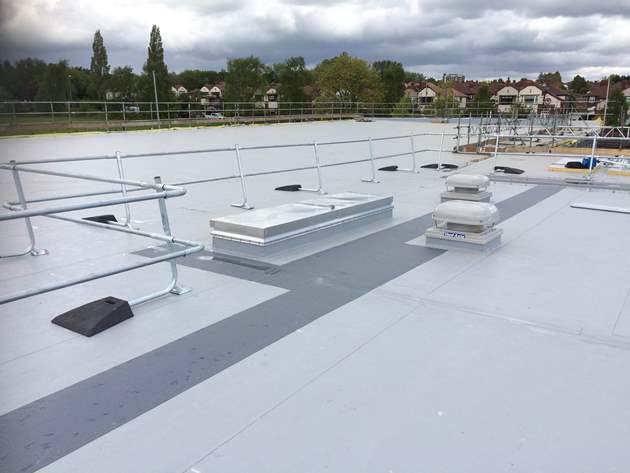When you send people onto your roof for repairs and maintenance, it’s likely that you already have a roof safety rail system in place to protect from falls off the perimeter.
But do you have your rooflights protected? Let’s take a look at why you should consider safety rails around your skylights as well as your roofing perimeter.
Why You Need To Protect Skylights
Rooflights are fragile areas that can often and easily be missed while contractors are focussed on other aspects of their work.
The delicate glass skylights pose a risk to contractors should they slip and fall onto one, and your premises are at risk of expensive damage should this happen.
Any obstacle on a roof poses a risk to someone working at height. This is particularly true in low visibility situations, such as during an emergency roof repair or maintenance in winter with snow cover. A rooflight can easily be missed if it is not safely guarded by rails.
Preventing Roof Access Is a First Step
Before you look at protecting fragile roof areas, think about who is able to access your business rooftop and when. Do they really need to access the roof, or can maintenance be carried out in an alternative place? You may want to consider moving plant where appropriate, if this reduces the need for roof access.
In addition, you can restrict access across a roof to only the areas which require contractors to reach. For example, freestanding safety rails can quickly and easily be installed across a rooftop to create a safe pathway. You can even reduce unauthorised access here by installing a lockable, spring-loaded gate.
Use Freestanding Railings to Protect Your Rooflights
Freestanding safety railings to protect skylights have several benefits:
1) There’s no permanent installation required, allowing for alterations or access at a later date;
2) There is no need to drill into the roof structure or damage the roof membrane; and
3) They can be easily seen by contractors.
A freestanding safety rail is weighted in a particular way that ensures the weight distribution is equal around the entire perimeter of the rooflight. This means there is less disturbance to the roof below, and that reduces the risk of damage to the roof surface.
In addition, a freestanding rooflight safety system is very easy and quick to install. It takes just a few minutes to connect all components together. There’s no need to drill: all elements can be safely screwed together in situ around the skylight.
Get a Free Consultation On Your Rooflight Needs
If you have rooflights or fragile roof areas on your business premises, get in touch for a free consultation. We’ll be happy to give you some no-obligation advice on the best way to protect your particular fragile roof areas.





